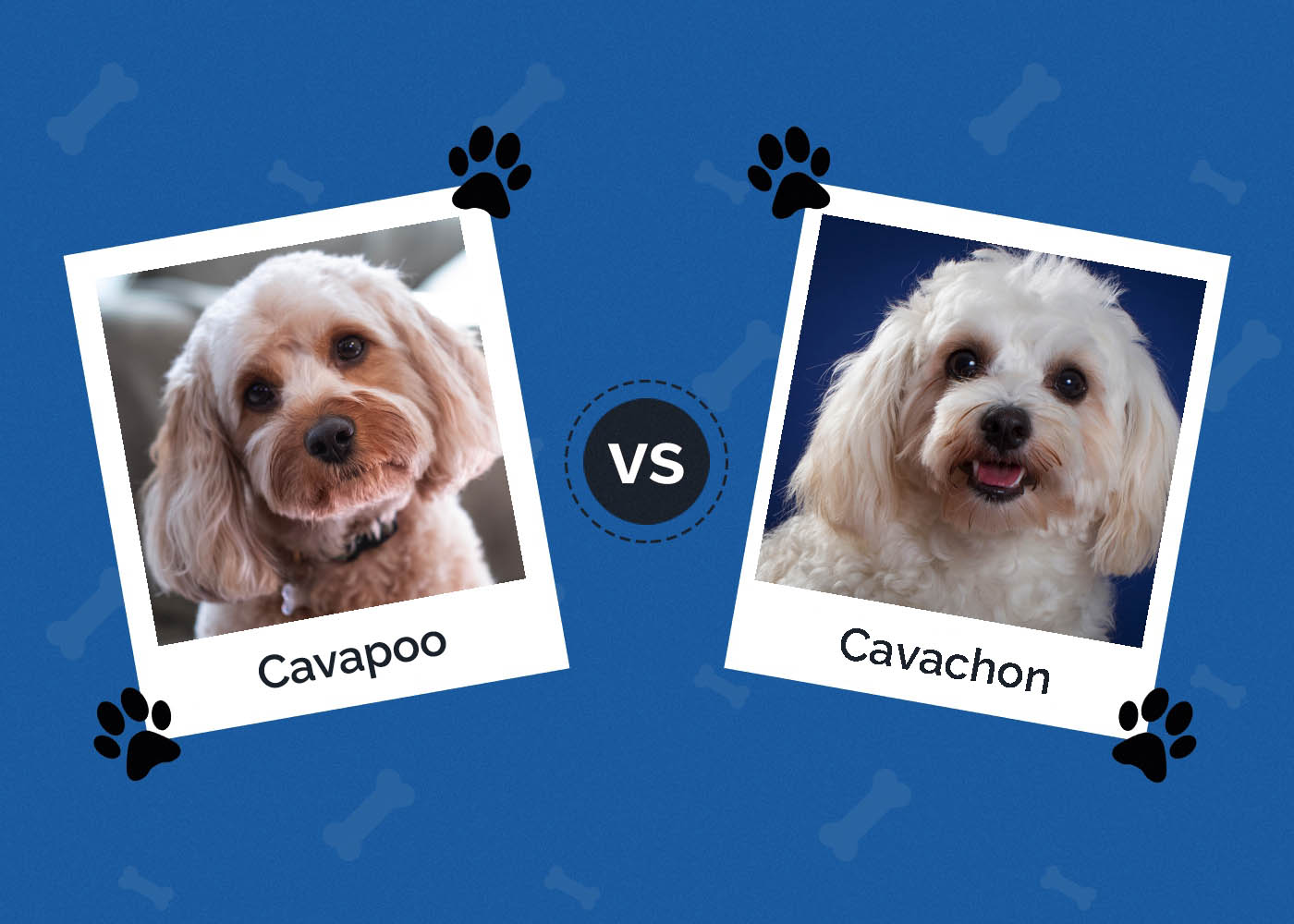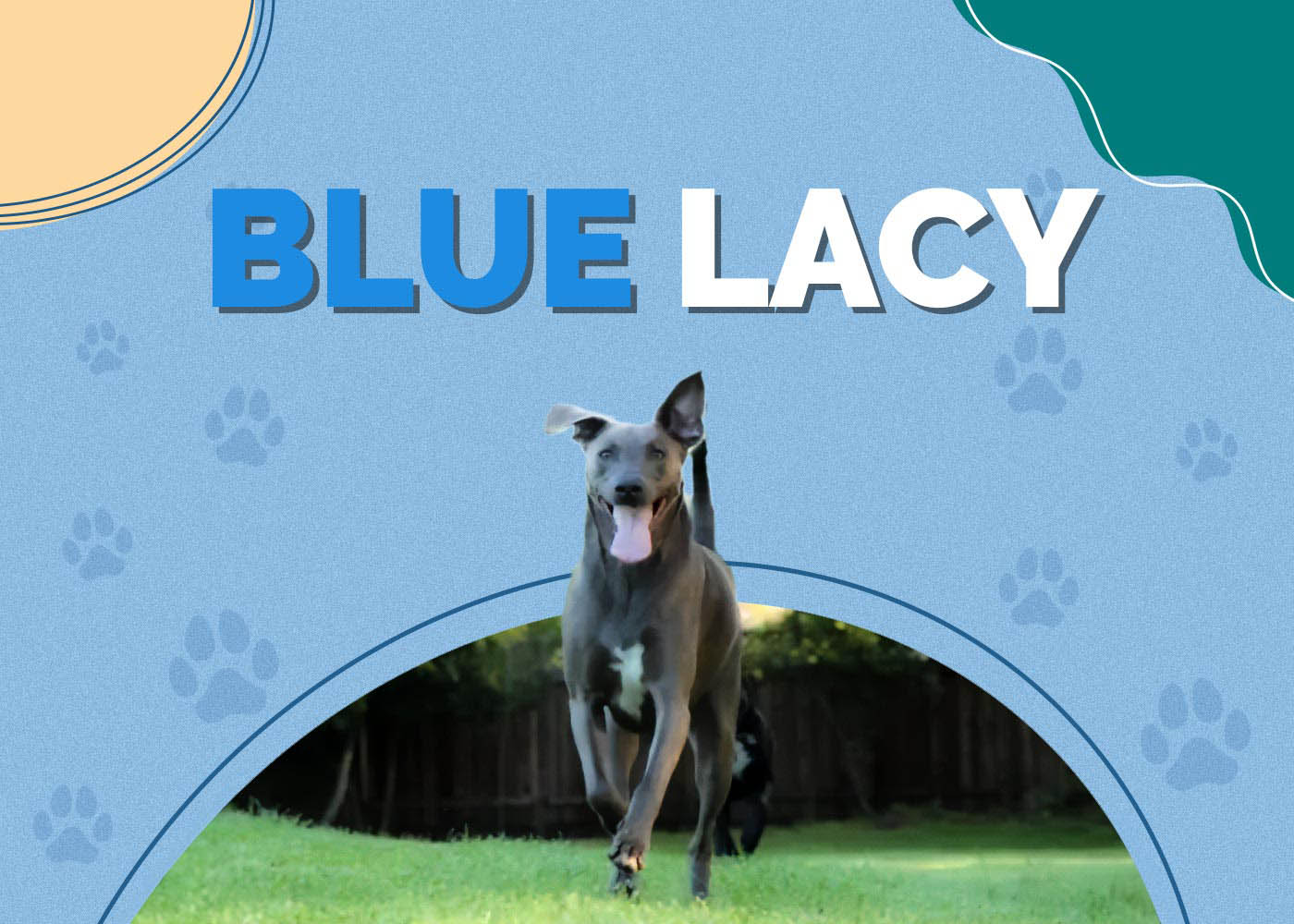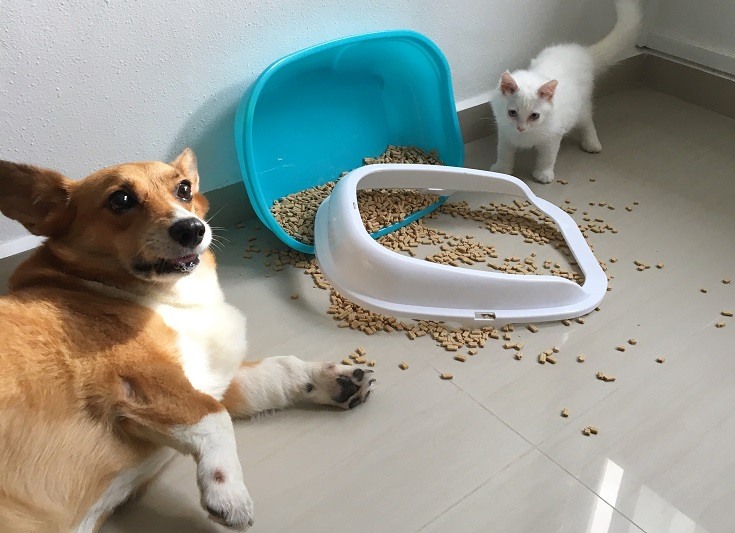How to Break Up a Dog Fight & Stop Them From Happening: Tips & Prevention
Updated on
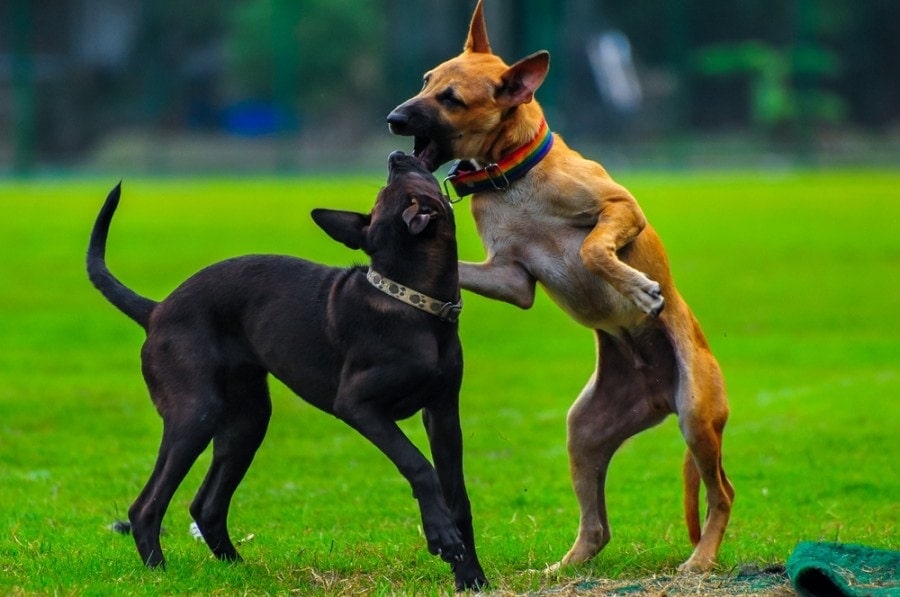
Click to Skip Ahead
It can happen in a few seconds. Misread signals or an unnoticed sign of aggression can quickly escalate into a full-blown attack. Recognizing the warning signs of an impending dog fight can help you know when to leave the situation before it has a chance to progress. If you can’t get out in time, it’s crucial to know how to break up the fight while not placing yourself in the fray.
Common Causes of Dog Aggression
While certain breeds are often blamed, an individual dog’s temperament and communication skills are the real culprits. Inadequate socialization training coupled with a handler’s lack of knowledge of body language can spell disaster.
Dogs are territorial creatures that will pick bones over anything from food to their favorite spot on the sofa. Their communication methods are much more subtle than ours, and some signs may be misinterpreted as playful or vice versa. This is especially true if the dog hasn’t been socialized. One of the benefits of early socialization is that older dogs often “mentor” puppies in a public setting, such as at a dog park. For example, an adult dog may gently snip at a young puppy to teach them the canine cultural faux “paws.” They usually realize the puppy is a baby who doesn’t know better, so they won’t bite to hurt them, but will let them know they’ve done wrong as a form of loving discipline. If your dog is your only pet or they don’t go out in public very much, they might not realize that they’ve breached the unspoken rules of dog etiquette, which can literally bite them in the butt as an adult.
Pet handlers also misread social cues. For example, one common misconception is the idea that a dog is always acting friendly if they’re wagging their tail. This is NOT true, as dogs may wag their tail in a stiff, terse motion to indicate that they’re ready to fight.
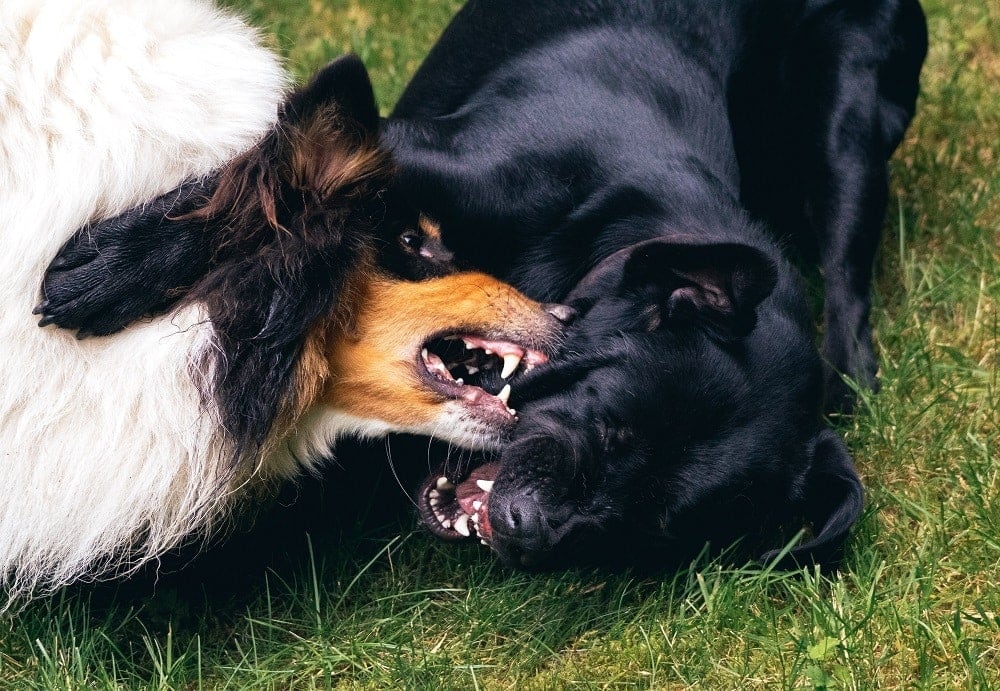
Recognizing Playing vs. Fighting
The first step in preventing dog fights is to realize how they begin. Usually there is an aggressor, but they may not be the actual assailant if the fight starts. It’s also important to realize the difference between when dogs are simply playing around and when they’re actually being serious.
Dogs that are just playing usually move with a floppy gait. Like old fashioned gentlemen, they may take a bow at the beginning of the match and usually take turns being the aggressor. This signals that there’s no intended harm, even if they’re growling and acting like they mean business. Their mouths are often open and floppy, as opposed to an actual attacking dog that keeps their lips tightly curled in a snarl until they find the opportunity to bite.
- Moving in swift, sudden movements
- Raising their hackles
- Tucking their tail
- Snarling, growling, or barking
- Lowering their ears
- Aiming for the throat
- Showing the white of their eyes
- Panting, snorting, or sniffing wildly
Some of these signs may slightly overlap with roughhousing, such as aiming for the throat. The most obvious sign that a dog is actually being aggressive is that they don’t take turns and there isn’t any indulgent room for play. They usually act quickly with little to no warning, immediately grabbing the throat or other vulnerable part of the body as opposed to their jowls, and don’t let the other dog have a chance to react.
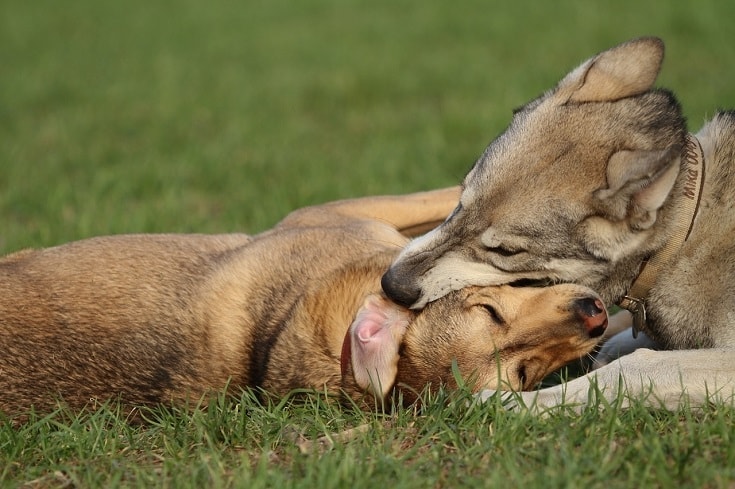
How to Break Up a Dog Fight
If you find yourself in the scary situation of watching your dog get attacked—or your dog attacking another dog—then the first step is to fight the instinct to panic. Follow these steps to break up the fight:
1. Try to regain control of the situation by distracting them.
Take a breath, stay calm, and try to distract the dogs anyway you can. Shouting, hosing them with water, whistling, blowing an air horn, or clapping your hands may work. Unfortunately, once a dog is latched onto the other, it can be very difficult to defer their attention. For this reason, it’s a good idea to carry bear mace, pepper gel, or citronella spray with you when you’re with your dog in a public area. Although your dog may also suffer from the spray, it could save their life in a dire situation.
2. Use an inanimate object to separate the dogs.
If you can’t distract them, move on to trying to separate them. Remember, do not place yourself between the fighting dogs. At this point, their attention is locked onto each other, and either one may bite you. For the same reason, keep your face and hands away from their reach. Wedge a lengthy object in between them, such as a push broom or a piece of plywood.
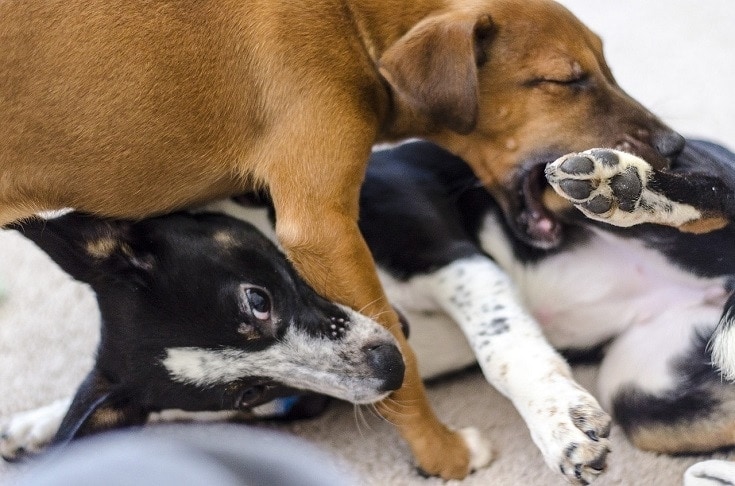
3. Break up the fight.
The last resort is to try to safely break up the fight by pulling the dogs away from each other. The wheelbarrow technique is the best way, but it’s most effective with two people who can separate both dogs at once. Grabbing them by their hindlegs, tilt the dog’s face towards the ground and pull them away from each other. Make sure to always keep your hands away from their mouth and out of biting range. If you’re alone, try to shout for help first.
4. Ask for the other dog owner’s contact information.
Regardless of whether you intend to press charges, you’ll want the other pet parent’s contact information because the vet will likely ask you if the other dog was caught up on vaccines.
5. Call the vet.
It’s always a good idea to call your vet after a dog fight, even if there weren’t any substantial injuries. If you see any bleeding, take them into the clinic immediately. Dog bites are always considered dirty wounds at risk of infection. Your dog may need a round of antibiotics to stay on the safe side. Depending on the extent of their injuries, they could also need stitches or emergency surgery.
How to Stop Dogs from Fighting In Your House
While we mostly focused on preventing and stopping dog fights that spontaneously appear in a public setting, we realize some households are at risk of a fight breaking out between two of their dogs. This distressing situation can put you in a difficult position since both dogs are your beloved pets.
1. Identify Potential Triggers
The first step to take is to identify and eliminate any possible triggers. Are your dogs fighting as soon as food is poured into their dish? Feeding them separately may resolve the issue. Are they literally fighting for your attention? Make sure you’re spending enough one-on-one time in separate rooms to curb jealous behaviors.
2. Make Sure There Are No Medical Issues
If you can’t find an underlying cause and there seems to be a main aggressor, you may want to take them to the vet to make sure there isn’t a medical issue that’s fueling the fire. This is especially true if your pets usually get along but have suddenly started being at odds with each other.
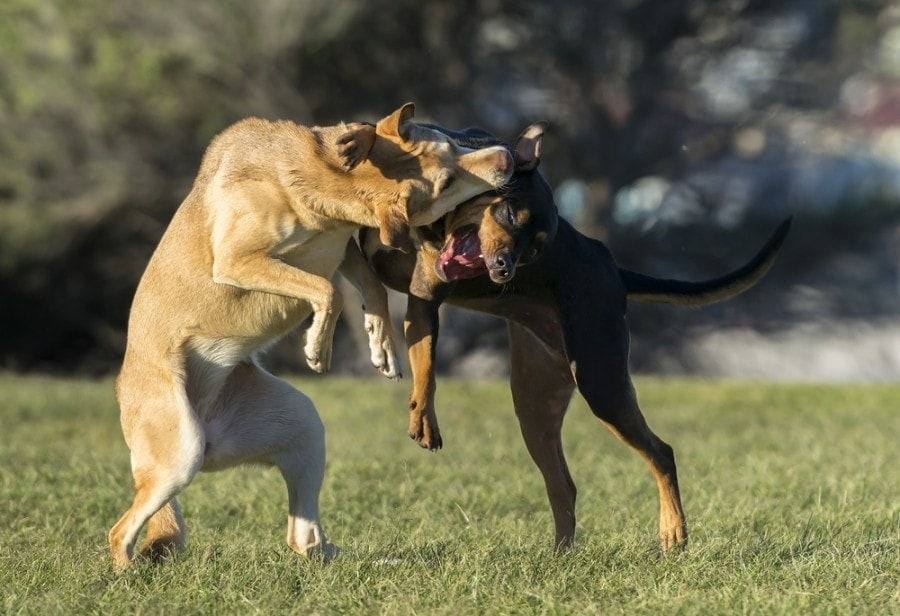
3. Seek Professional Help
Once you’ve found the underlying issue, we recommend consulting your veterinarian or a dog trainer for advice, especially if your dogs are new to each other or haven’t been adequately socialized.
Final Thoughts
As a loving pet parent, it’s important to familiarize yourself with the common causes and signals leading up to a dog fight. If you can’t prevent it from happening, you’ll have to react quickly to reduce the risk of serious injuries to you and your dog. Despite the adrenaline rush, it’s important to stay calm and think logically, never putting yourself in between the two fighting dogs. Instead, do your best to distract them and separate them with an inanimate object, such as a piece of plywood. If you’re not alone, you and the other person can try the wheelbarrow technique on both dogs at once to separate them safely. Otherwise, it’s best to call for help to prevent you from being bitten.
Featured Image Credit: Puripat Lertpunyaroj, Shutterstock



